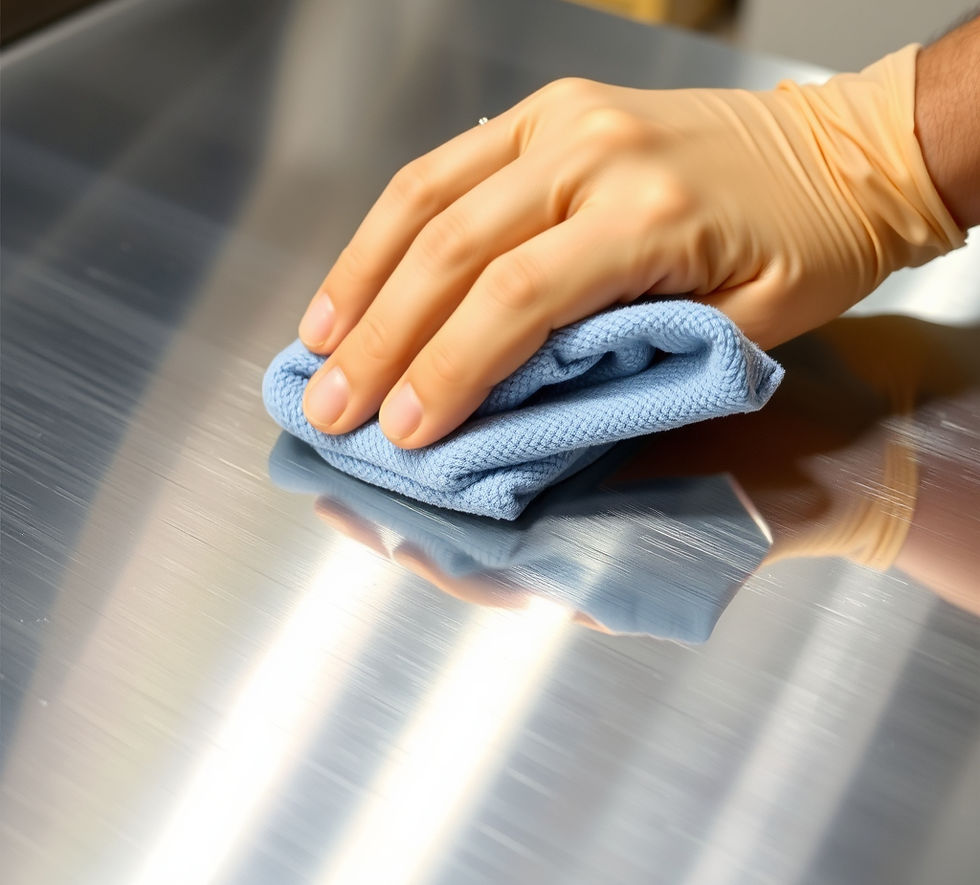Embracing the Circular Economy: How Coatings Extend the Life of Historic Buildings
- Everbrite Coatings

- Oct 16
- 3 min read
The circular model, which prioritizes keeping materials and resources in use for as long as possible, is inherently aligned with the core mission of preservation: stewardship and maximizing the lifespan of the built environment.
In this context, specialized restoration coatings like those from Everbrite Coatings are not mere finishing touches—they are essential conservation tools that directly contribute to economic and environmental sustainability by dramatically extending the service life of historic building materials.
1. Preservation is the Original Circular Economy
The most effective way to be "circular" in construction is to avoid new construction altogether. Historic buildings represent massive amounts of embodied energy—the sum of all energy required to extract, process, manufacture, transport, and install the original materials.
Restoration over Replacement: When historic materials deteriorate, the traditional linear approach (take-make-dispose) dictates removal and replacement, which triggers a new cycle of material extraction and energy expenditure. The circular model, powered by innovative preservation technologies, mandates restoration and in-situ repair.
Coatings as a Service Life Multiplier: Coatings function as a sacrificial, maintainable layer that shields the original substrate. By preventing corrosion, fading, and degradation, they delay the point at which replacement is necessary, ensuring the original material's embodied energy remains conserved within the structure.
2. The Economic and Environmental ROI of Protective Coatings
The strategic use of clear protective coatings yields significant returns on investment in both cost and environmental impact:
ROI Factor | Linear Approach (Replacement) | Circular Approach (Coating/Restoration) |
Embodied Energy | Massive energy loss and new expenditure. | Conserved. The original material's energy is retained. |
Material Cost | High cost of new custom or matching materials. | Low cost of coating material and minimal labor for restoration. |
Maintenance Cycle | Shortens due to material exposure; requires future full replacement. | Extends service life by years. Maintenance is simple re-application. |
Waste Generation | High volume of waste from demolition and disposal. | Minimal waste from cleaning and coating materials. |
Coatings like Everbrite restore the original aesthetic of materials like faded anodized aluminum, blackened bronze or tarnished copper, allowing historic architectural features to remain in service. This capability is crucial for successful adaptive reuse projects, where maintaining material authenticity is essential for historic tax credits and neighborhood character.
3. Application: Protecting the "Skin" of the Building
Historic structures are often characterized by intricate metalwork, which is unfortunately the most vulnerable to environmental degradation. Specialized coatings target these materials to secure their longevity:
Architectural Metals: Everbrite Coatings seal and protect both ferrous and non-ferrous metals. For example, Everbrite on architectural copper and brass halts the oxidation and tarnish process, preserving the desired finish. Another example is ProtectaClear application keeping stainless steel looking clean day in and day out by preventing fingerprints, scratches, smudging, and salt corrosion.
Faded Finishes: Everbrite coating restores the color and luster of faded, chalky anodized aluminum or painted metal. By eliminating the dullness, they remove the primary cosmetic reason for replacement, while strong UV blockers prevent future degradation.
Graffiti Resistance and Easy Maintenance: Everbrite Coatings are graffiti resistant. This means the coating, not the historic substrate, absorbs damage, allowing for graffiti removal using solvents and simple re-application of the coating. This capability drastically lowers maintenance costs and preserves the integrity of the historic material beneath. Everbrite Coatings all have self-annealing properties, which means new coats blend seamlessly into the old, allowing for infinite maintenance without stripping the entire surface.
By choosing high-performance Everbrite Coatings, preservation professionals are taking a definitive step towards sustainability. They are not merely delaying decay; they are investing in the material's future, aligning their projects with the most powerful sustainability model available: conservation.
To explore solutions for your next adaptive reuse or preservation project, visit the Everbrite Professional Restoration pages:





Comments